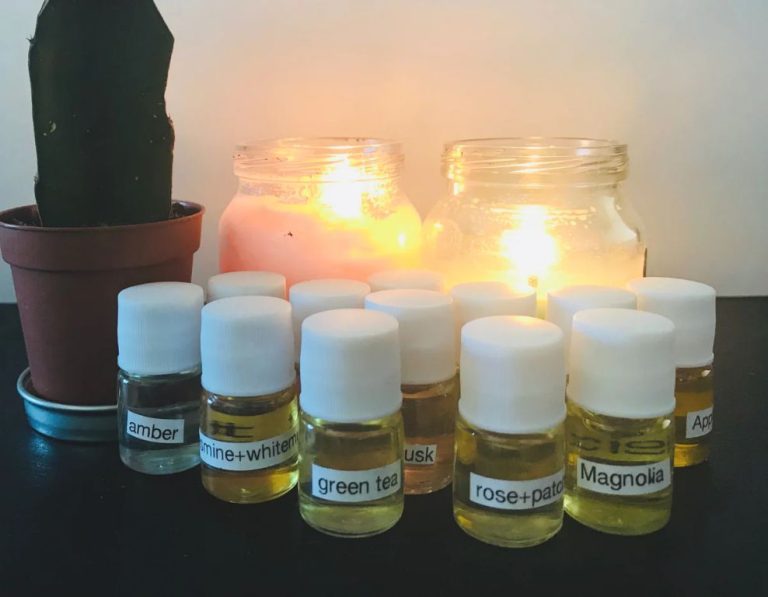Are Candle Heaters Safe?
What are candle heaters?
Candle heaters, also known as paraffin heaters, are portable heating devices that use candles as a heat source. They consist of a metal or ceramic container that holds a candle. The candle is lit, and the heat from the flame is radiated outwards and upwards by the container, providing localized heating.
The basic mechanism is straightforward. As the candle burns, it produces heat. The container absorbs and re-radiates this heat while protecting the flame and controlling airflow. This allows more efficient transfer of heat into the surrounding room. Many candle heaters use tea lights or votive candles which are inexpensive and readily available.
Candle heaters come in various shapes and sizes. Small tabletop versions provide personal heating while larger freestanding models can warm an entire room. Most incorporate ventilation holes to supply oxygen to the flame. Some use fans or convection currents to maximize heat circulation.
Overall, candle heaters offer a simple, affordable, and renewable way to produce supplementary heat without electricity or other fuel sources. Their charming, flickering light can also contribute to a cozy ambiance.
The benefits of candle heaters
Candle heaters provide several benefits that make them an attractive heating option for many households. Here are some of the main advantages of using candle heaters:
Supplemental heat – One of the big pluses of candle heaters is that they provide supplementary heat. This means they can help take the chill out of a room without having to turn up your home’s thermostat. Candle heaters don’t replace your main heating system, but they can take the pressure off of it.
Ambiance – In addition to providing warmth, candle heaters create a cozy and inviting ambiance. The soft glow of a burning candle contributes to a comfortable atmosphere. This makes candle heaters nice options for dens, bedrooms, bathrooms, and other intimate spaces.
Low-cost – Operating a candle heater is very inexpensive compared to running an electric or gas heater. After the initial purchase, the only ongoing cost is replenishing the wax or oil. This allows candle heaters to provide economical supplemental warmth.
Simple – Candle heaters are also valued for their simplicity. They don’t require any complicated setup, fuel lines, or installation. Just place the candle fuel in the holder, light it, and enjoy the radiant warmth. This convenience and ease of use is advantageous for many consumers.
Potential fire hazards
One of the biggest concerns with candle heaters is the open flame and potential fire hazard. Unlike other home heating options like electric or gas heaters, candle heaters rely on an open flame for heat. This introduces an inherent fire risk, especially if proper precautions are not taken.
Having an open flame in close proximity to combustible materials like curtains, furniture, carpeting, etc. can easily ignite a fire. Candle heaters lack automatic safety features like sensors or auto shut off that are common in other heaters. If tipped over, a candle heater will continue burning, unlike an electric heater that would shut off automatically.
Without proper handling and precautions, the open flame and lack of safety controls make candle heaters much more prone to starting accidental fires. It’s important to keep them away from anything flammable and never leave them unattended.
Carbon Monoxide Concerns
One of the main safety concerns with candle heaters is the potential danger of carbon monoxide poisoning. Carbon monoxide (CO) is a colorless, odorless gas that can be lethal in high concentrations.
Carbon monoxide is produced when fuels such as candle wax, oil, wood, coal, natural gas, propane, gasoline, kerosene, or methane are burned. During the combustion process, oxygen combines with carbon to produce CO. Even a properly-ventilated candle produces some CO, but using a candle heater in an enclosed space greatly increases the risks.
As CO builds up in an enclosed room, it displaces the oxygen and can lead to CO poisoning, with symptoms such as headache, dizziness, weakness, upset stomach, vomiting, chest pain, and confusion. High levels of CO can cause loss of consciousness and death. Those most at risk include the elderly, children, unborn babies, and people with heart disease or lung conditions.
To reduce the risk of CO poisoning, candle heaters should never be used in enclosed bedrooms, bathrooms or tents. Even using them in a single room for an extended period requires proper ventilation to allow dangerous gases to dissipate. CO detectors can also help alert occupants to rising CO levels before they reach dangerous levels.
Safety Tips
When using candle heaters, it’s important to take proper safety precautions. Here are some tips for safe use:
Proper Placement: Make sure to place the candle heater on a stable, level surface away from curtains, furniture, bedding or anything flammable. Keep it at least 3 feet from flammable items. Never place on cabinets or shelves where it could get knocked over.
Ventilation: Use candle heaters only in well-ventilated areas. Don’t use in enclosed spaces like tents or small rooms, as this poses a carbon monoxide risk. Keep a window cracked open or use a fan to circulate fresh air.
Supervision: Never leave a burning candle unattended. Stay in the same room and keep an eye on the candle at all times. Extinguish before leaving the area or going to sleep.

Fire-Resistant Holders: Place candle heaters on a fire-resistant surface like a ceramic, metal or glass tray. Don’t put directly on wood, plastic or other flammable materials. Use holders specifically made for candle heaters.
With proper safety habits, you can enjoy the ambient warmth of a candle heater. But be vigilant about placement, ventilation and monitoring to prevent fire or carbon monoxide dangers.
Recommended Safety Features
While candle heaters can provide an attractive source of warmth, they should only be used with proper precautions. Here are some recommended safety features to look for when using a candle heater:
Holders
Look for sturdy, non-tip candle holders made from non-flammable materials. The holder should fully enclose the flame and be placed on a stable, level surface away from anything flammable.
Auto-Extinguishing
Choose candle holders with auto-extinguishing features that will snuff out the flame if tipped over. This prevents fires from being started if the heater gets knocked over accidentally.
Timers
Using timers allows the candle to burn unattended for a set period before turning off. This reduces fire risks from forgetfulness or falling asleep.
Detectors
Smoke detectors and carbon monoxide detectors should be installed and functional in any room using a candle heater. These provide warning of dangerous conditions.
Flameless
Flameless candle heaters use LED lights to simulate a flame without the fire risk. However, these models do not provide as much heat output as real candles.
Regulations and warnings
Candle heaters are subject to various regulations and safety warnings from government agencies and safety groups. Here are some key things to be aware of.
Product labels
Most candle heaters will have labels indicating that they are for decorative use only and not intended to be the main heat source in a room. The labels also contain cautions about fire risks and that the heater should not be left unattended.
Building codes
Many building codes prohibit the use of open flame devices, including candle heaters, in certain facilities like nursing homes, hospitals, and schools. Check your local building codes to ensure candle heaters are permitted.
Fire marshal warnings
Fire marshals often warn that candle heaters can be dangerous fire hazards if not used properly. The concern is that they have open flames that can easily ignite nearby combustible materials if tipped over.
Alternatives to Candle Heaters
While candle heaters provide a unique heating solution, there are other options that may be safer and more effective in certain situations.
Electric Space Heaters
Electric space heaters use electricity to generate heat, either by sending heat outward using a fan or by heating an object like a ceramic plate that then radiates warmth. Space heaters with safety features like automatic shut-offs if tipped over can minimize risks of fires. However, electric space heaters use more electricity than candle heaters.
Radiant Heaters
Radiant heaters or infrared heaters work by heating a surface which then emits infrared radiation to directly warm people and objects. Radiant heaters don’t heat the surrounding air as much as convection heaters. They can provide targeted warmth and energy efficiency. However, improperly installed radiant heaters can pose fire risks.
Insulation
Improving insulation, sealing air leaks, and taking other efficiency measures can reduce the amount of heating needed in a space. While not a direct replacement for a heater, upgraded insulation can lower energy costs for heating while providing warmth.
Proper Use Cases for Candle Heaters
Candle heaters can be useful for providing supplemental heat and ambiance in certain situations when used properly and safely. Here are some recommendations on proper use cases to maximize their benefits while minimizing risks:
Occasional vs. Continuous Use: Candle heaters work best for providing occasional, short-term heat in small spaces, for instance a bathroom while taking a shower. They should not be used as a primary or sole source of heat over long periods of time in larger living spaces, as they may not be able to adequately heat larger areas.
Small vs. Large Spaces: A candle heater can help provide a boost of warmth and ambiance in confined spaces like bathrooms, walk-in closets, and other small rooms. However, for larger living spaces like bedrooms, living rooms, and kitchens, candle heaters should only be used sparingly and temporarily. Relying on them to heat larger rooms for extended periods can pose safety risks.
By keeping use to smaller spaces and shorter time periods, candle heaters can be safely enjoyed. But improper continuous use in oversized rooms should be avoided. Following the manufacturer’s warnings and instructions is also key to maximizing safety.
Conclusion
Candle heaters can be a convenient and affordable way to provide supplemental heat and ambiance to a room. However, like any open flame device, they do carry some safety risks if not used properly.
The main safety considerations with candle heaters are the risk of fire from having an open flame, and the potential for dangerous carbon monoxide buildup if used in a confined space. Always place candle heaters on a stable, non-flammable surface away from drapes or other flammable materials. Never leave them unattended or sleep in a room where one is burning. Ensure proper ventilation by opening a window or keeping a door open.
For maximum safety, choose a candle heater with an automatic shutoff feature if tipped over, and a safety cage around the flame. Only use the recommended fuel type, and extinguish candles before relighting to prevent excess wax buildup. With proper precautions, candle heaters can be safely enjoyed in moderation.
In summary, candle heaters require caution and attentiveness to use safely. For regular or overnight heating needs, a safer alternative like an electric or infrared space heater may be preferable. But for occasional short-term use, a candle heater can be a charming supplemental heating source if used properly.


